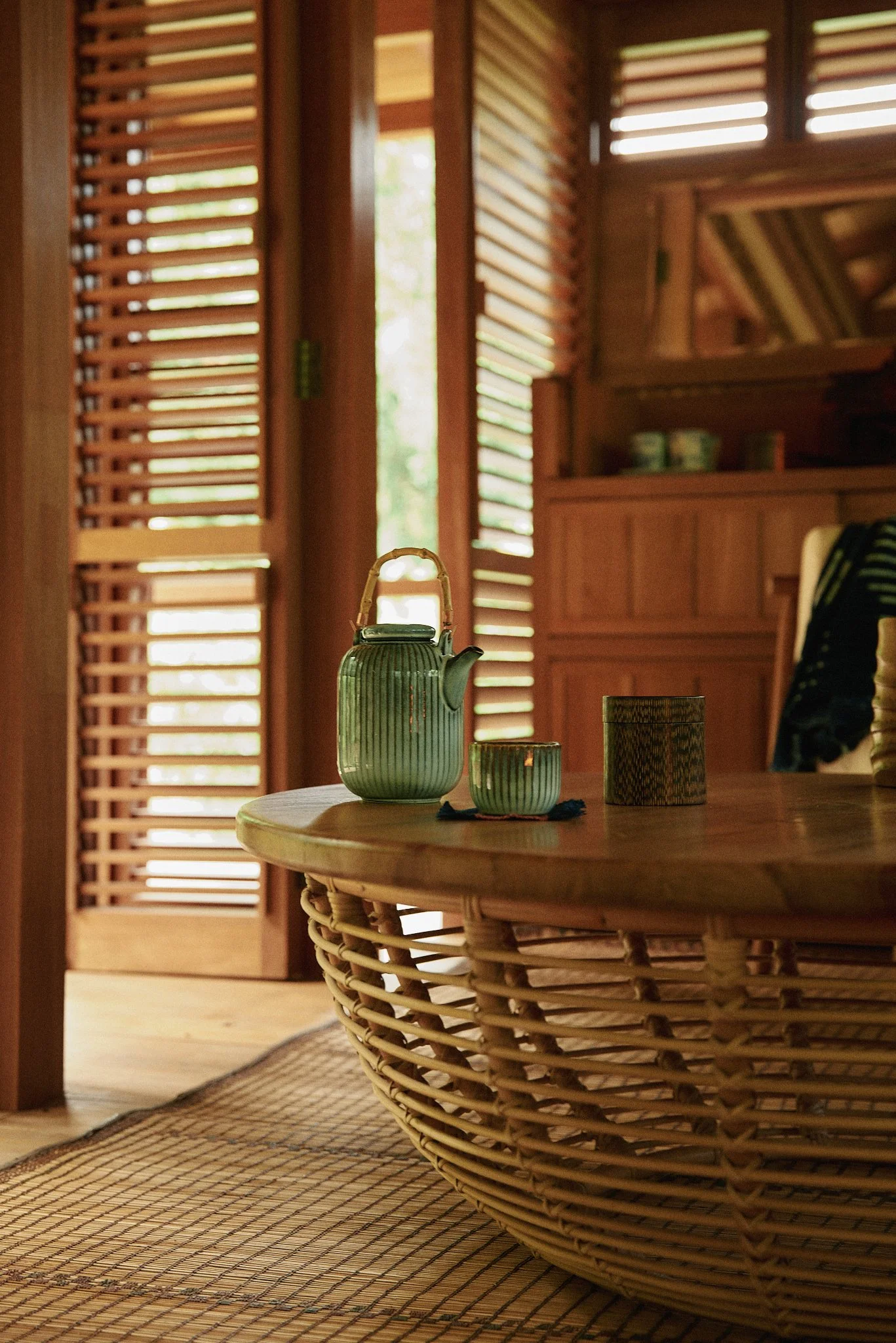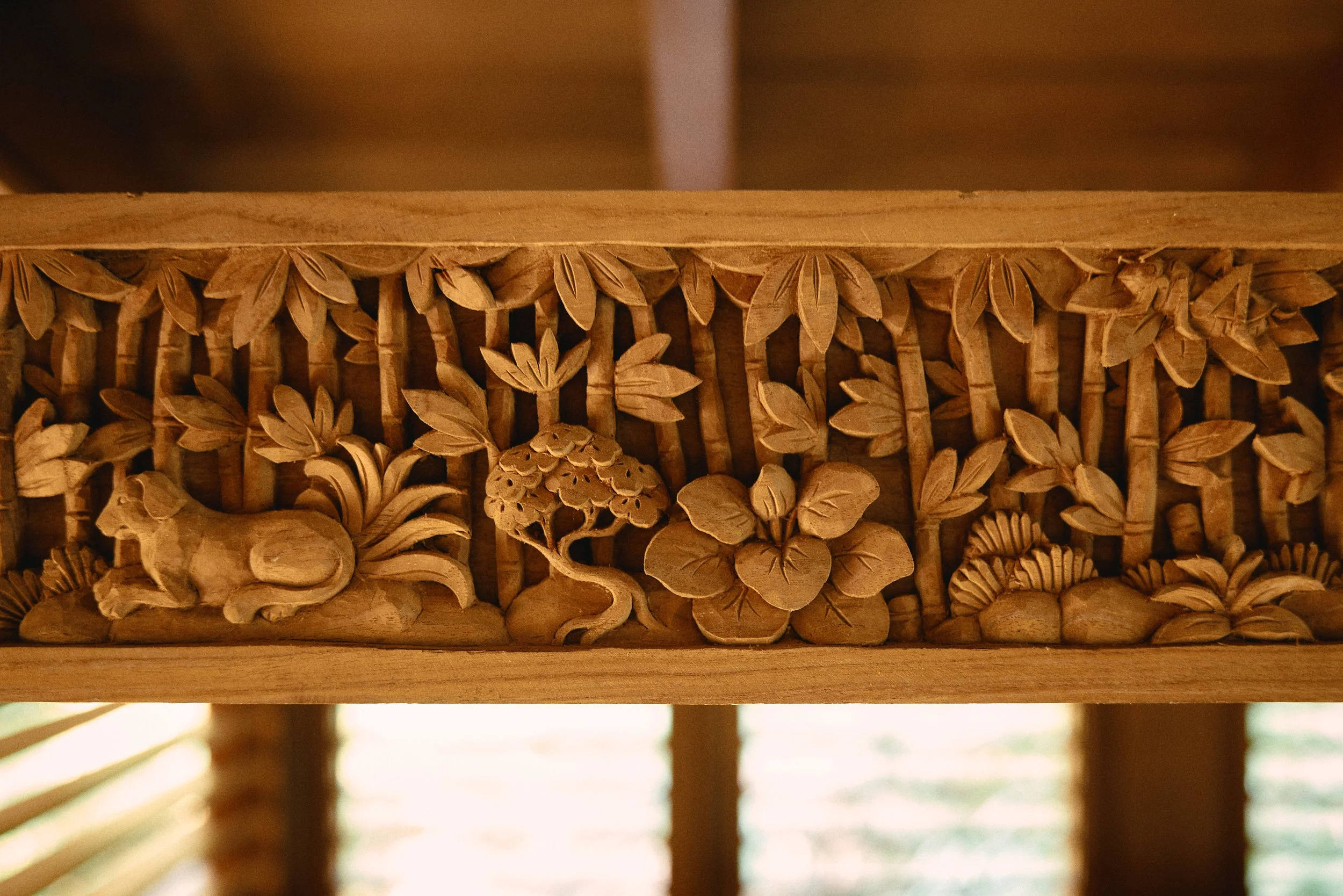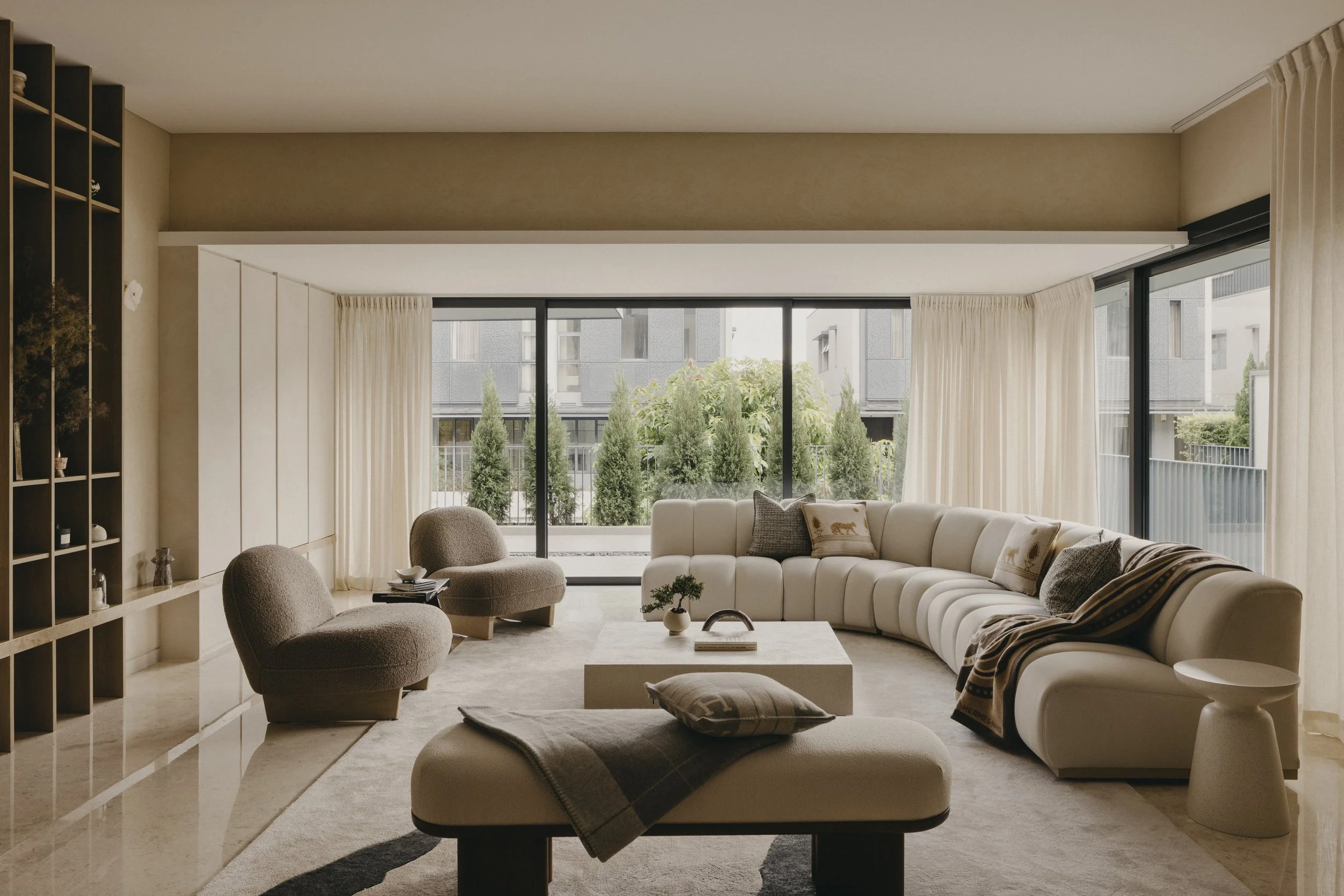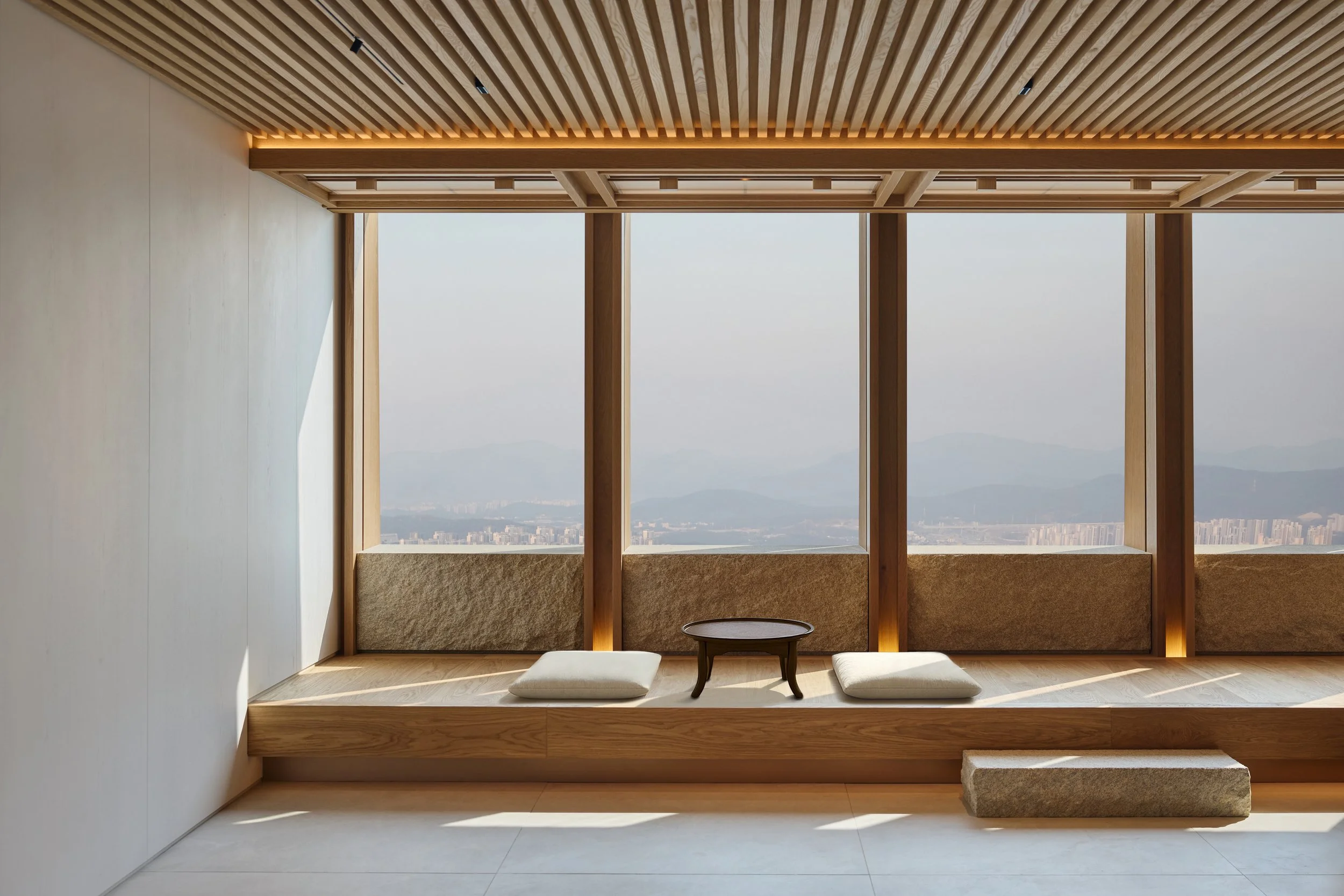
Le Grillon by A Work of Substance
Along the Mediterranean coast, Le Grillon by Hong Kong–based studio A Work of Substance is conceived as a pavilion for stillness, a meditative structure that blurs the boundary between built form and nature.
Anchored within a lush garden of native fauna and flora, it functions as both teahouse and cultural sanctuary, where every element engages in quiet dialogue with the surrounding landscape.
The architecture emerges from the land as a continuation of it. Elevated lightly above the ground, the pavilion invites the coastal breeze to flow beneath and through it. Its open roof allows sunlight to filter softly into the interior, creating a dynamic play of light and shadow that shifts throughout the day. Louvered thresholds frame views of the garden and regulate air and light, offering a fluid transition between enclosure and exposure. The experience of inhabiting Le Grillon is one of gentle immersion, an architectural gesture that honors presence over formality.
Informed by traditional Indonesian joglo construction, the structure embraces passive ventilation and natural cooling. The expressive timber framework, hand-carved by local artisans, tells the story of the family who commissioned it, embedding memory and identity into its fabric. These carvings, combined with tactile materials and natural finishes, root the project in its cultural and geographic context.
The teahouse's identity draws from the cricket, a creature long revered in Chinese culture as a muse for poets and scholars. This symbolic reference unfolds subtly throughout the architecture and landscape, from the pavilion's name, Le Grillon, to the delicate proportions of its lighting, scaled to the insect's quiet movements. Surrounded by France Bleu eucalyptus trees that frame the structure like the silhouette of a teapot, the setting becomes both shelter and sculpture.
Inside, the experience continues with the cha'dansu, a carefully crafted chest that houses utensils for tea preparation. Its construction mirrors the architectural ethos of Le Grillon: precise, ordered, and imbued with reverence for the act of making. The composition of the interior is spare yet layered, allowing materials and light to define the atmosphere rather than ornamentation.
Steeped in the poetic sensibilities of East Asian tradition, Le Grillon draws from the serenity of classical Chinese gardens, where time slows and nature's subtleties are observed with care. The pavilion becomes a contemporary echo of this lineage, a place to sip tea, to listen to the hum of crickets, and to find comfort not through luxury but through harmony with the elements.
In its synthesis of cultural symbolism, traditional craftsmanship, and bioclimatic intelligence, Le Grillon stands as a meditation on the essence of dwelling, an architecture of calm observation that invites both introspection and communion with the landscape.

















